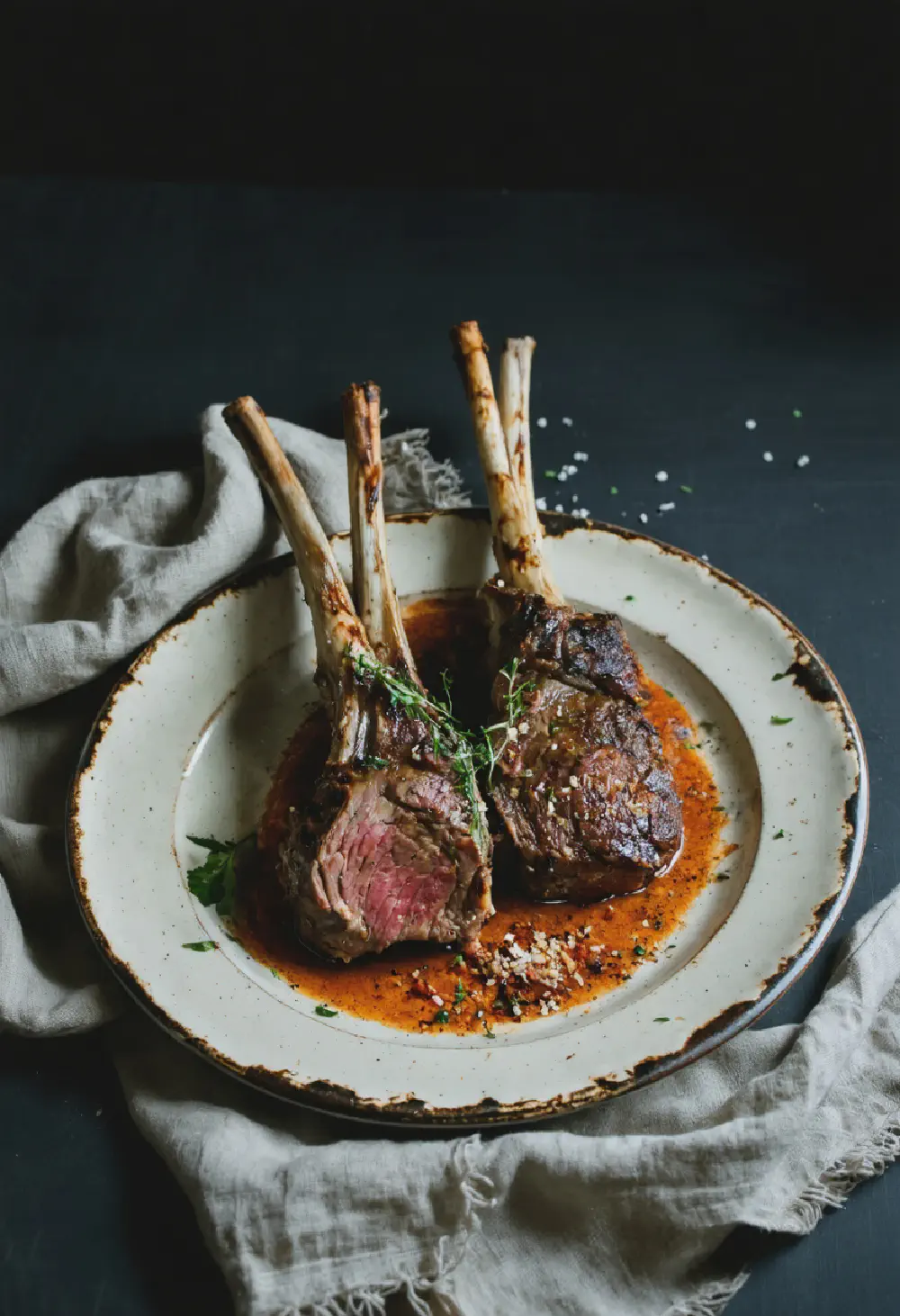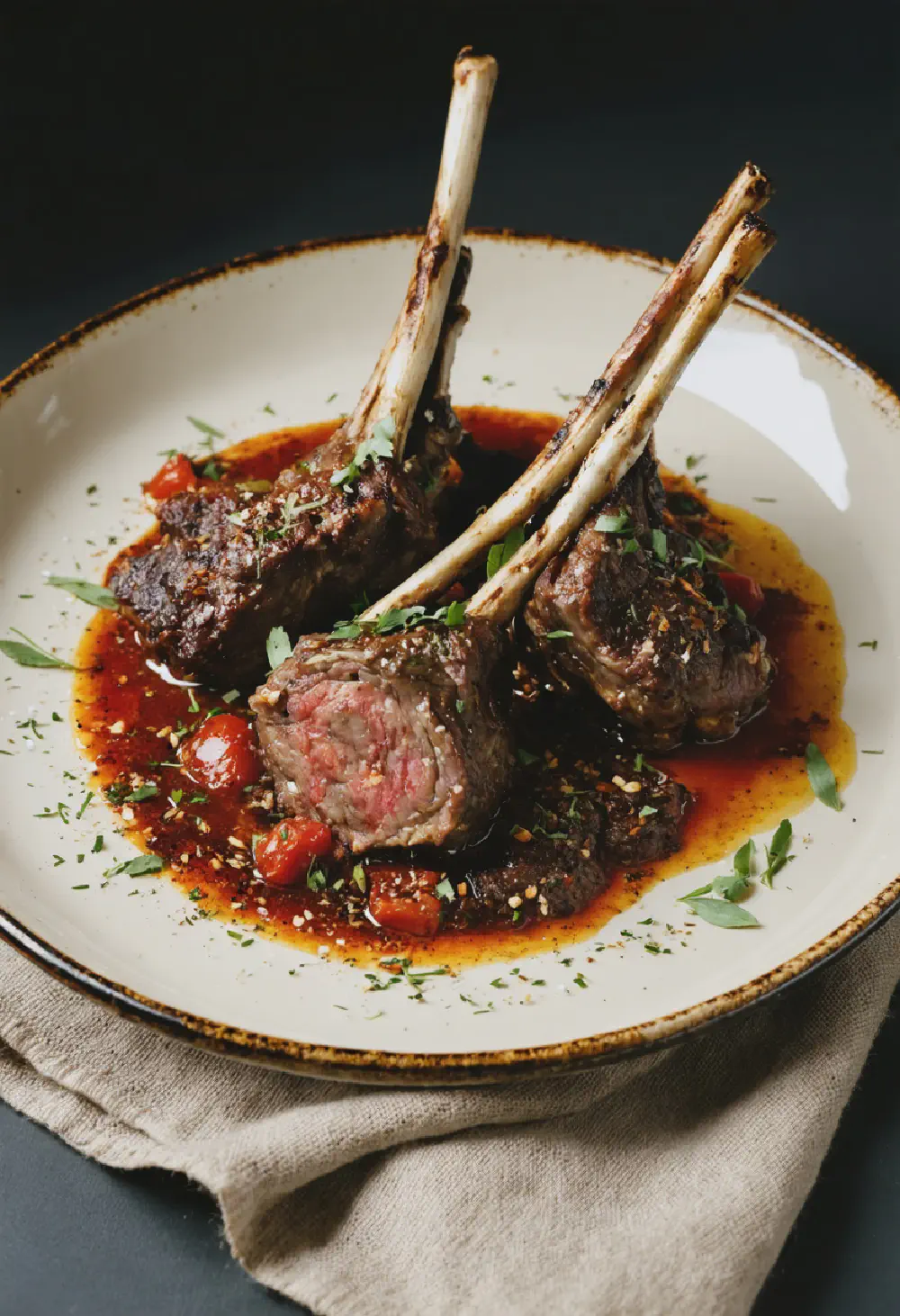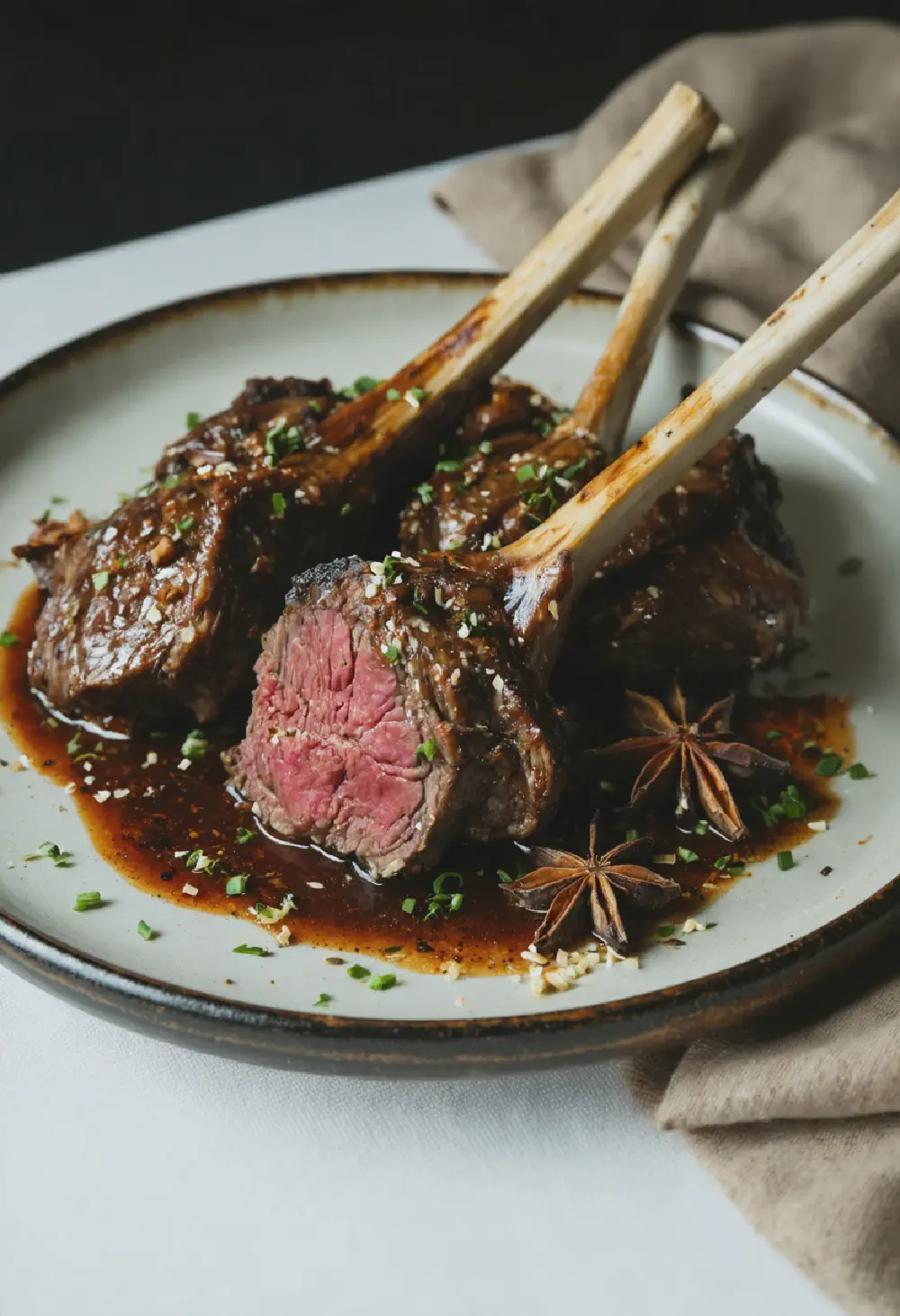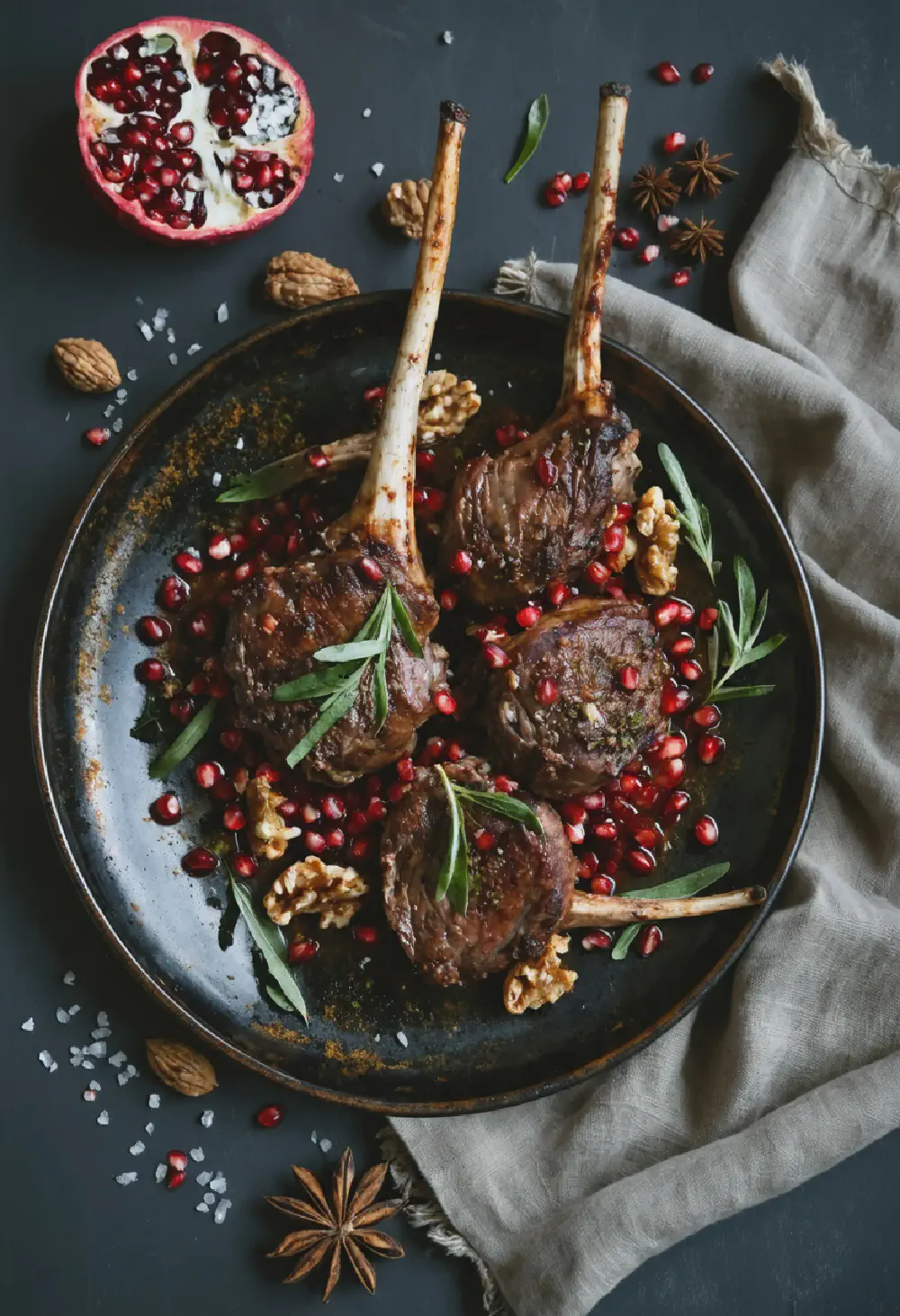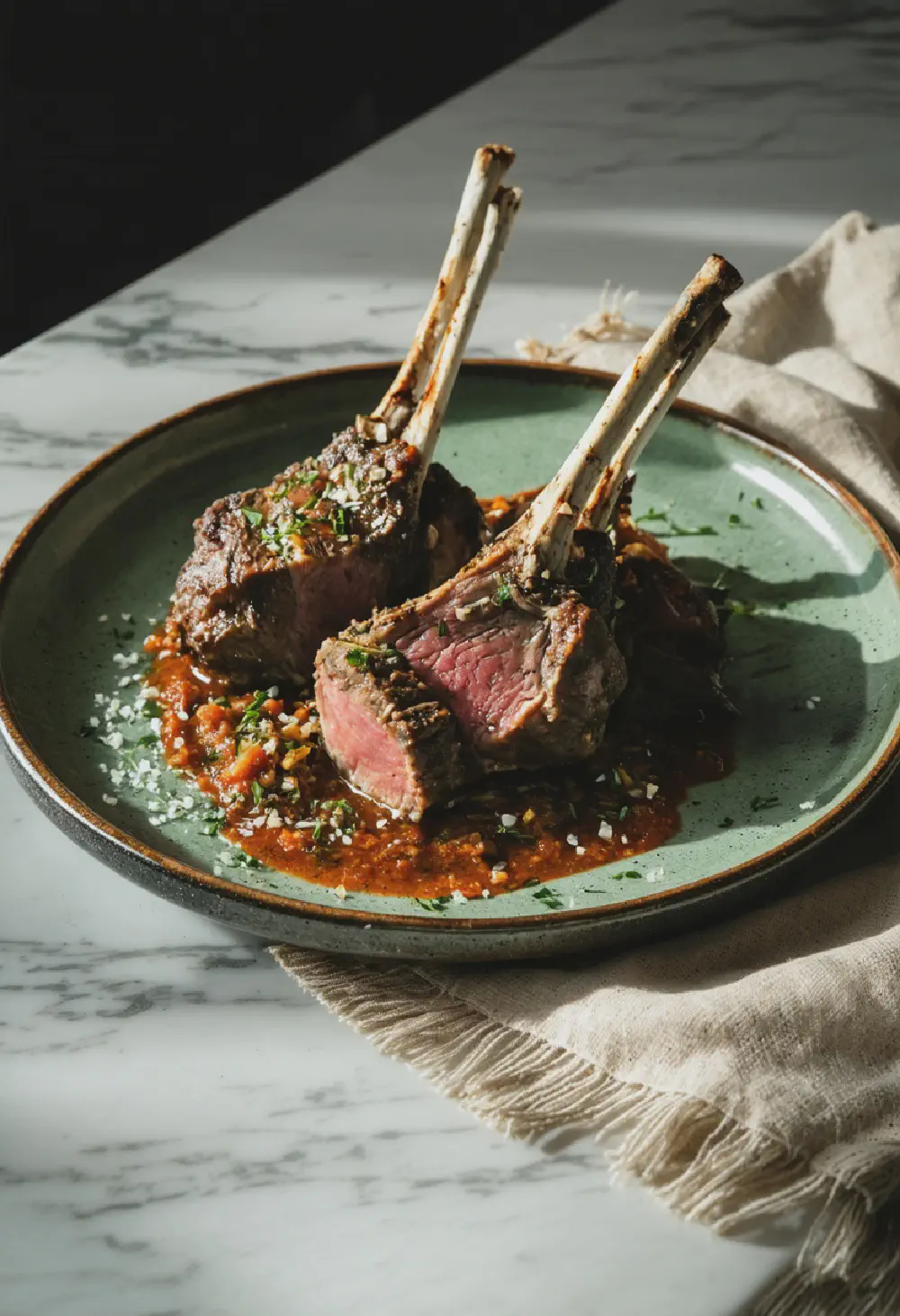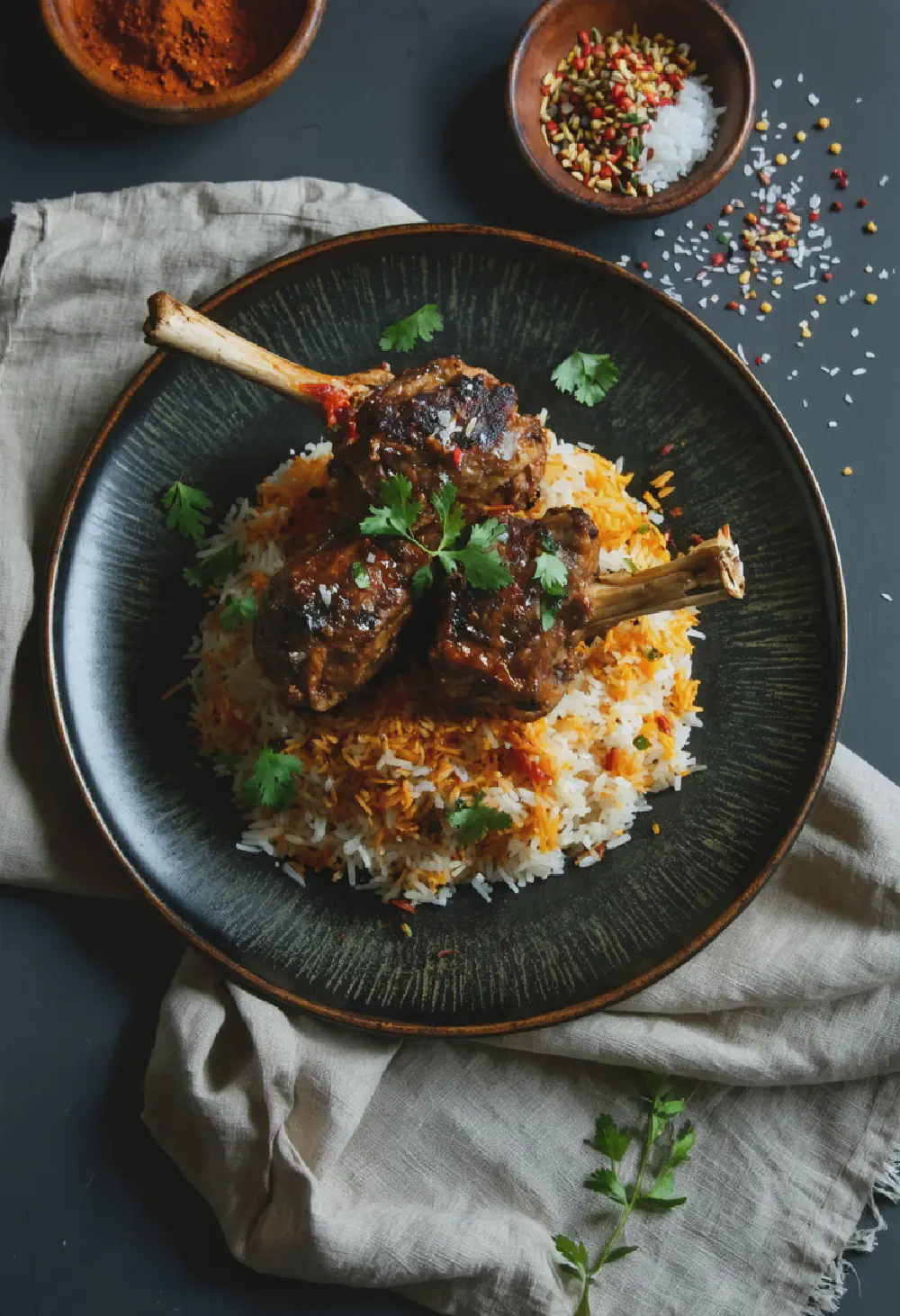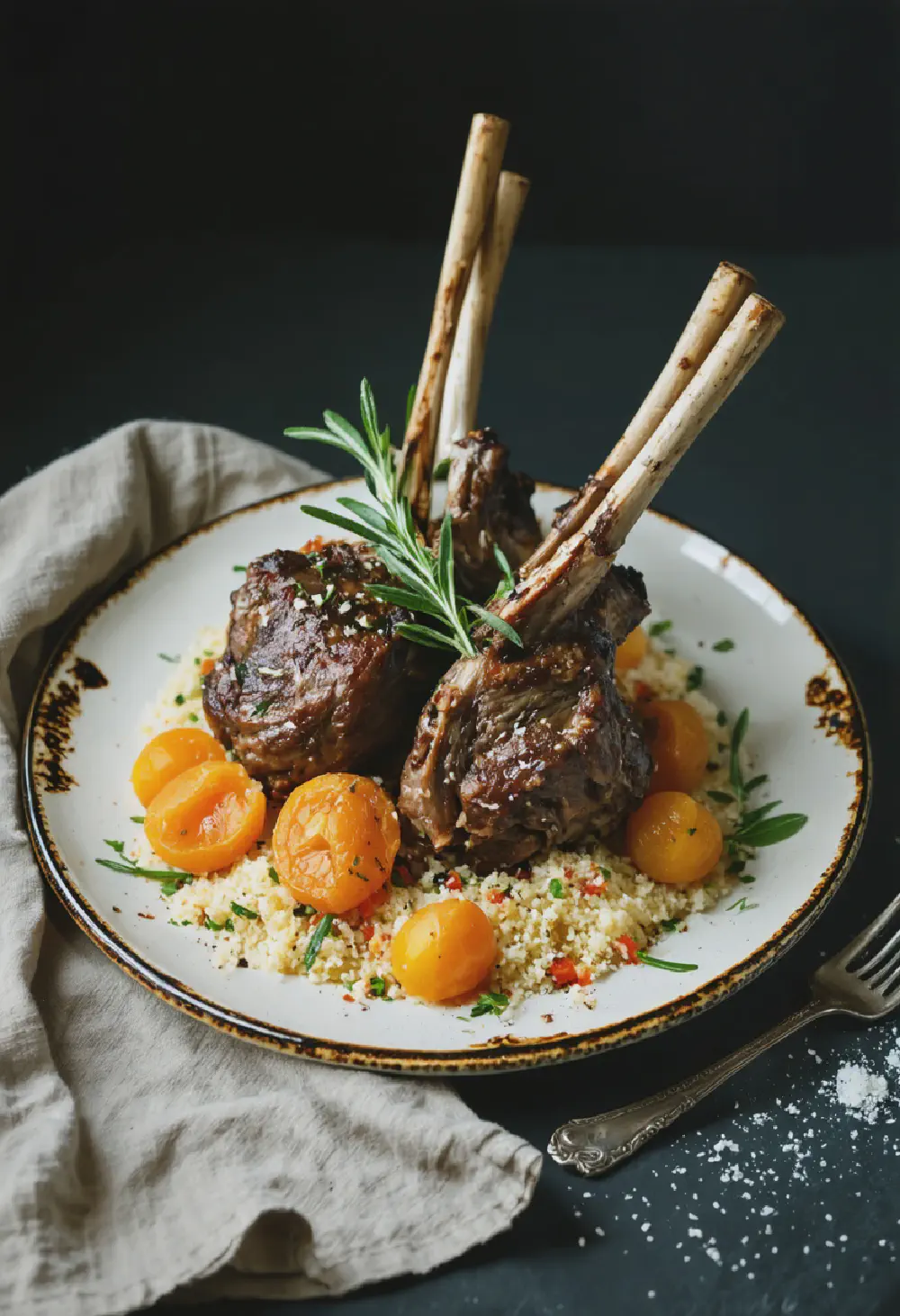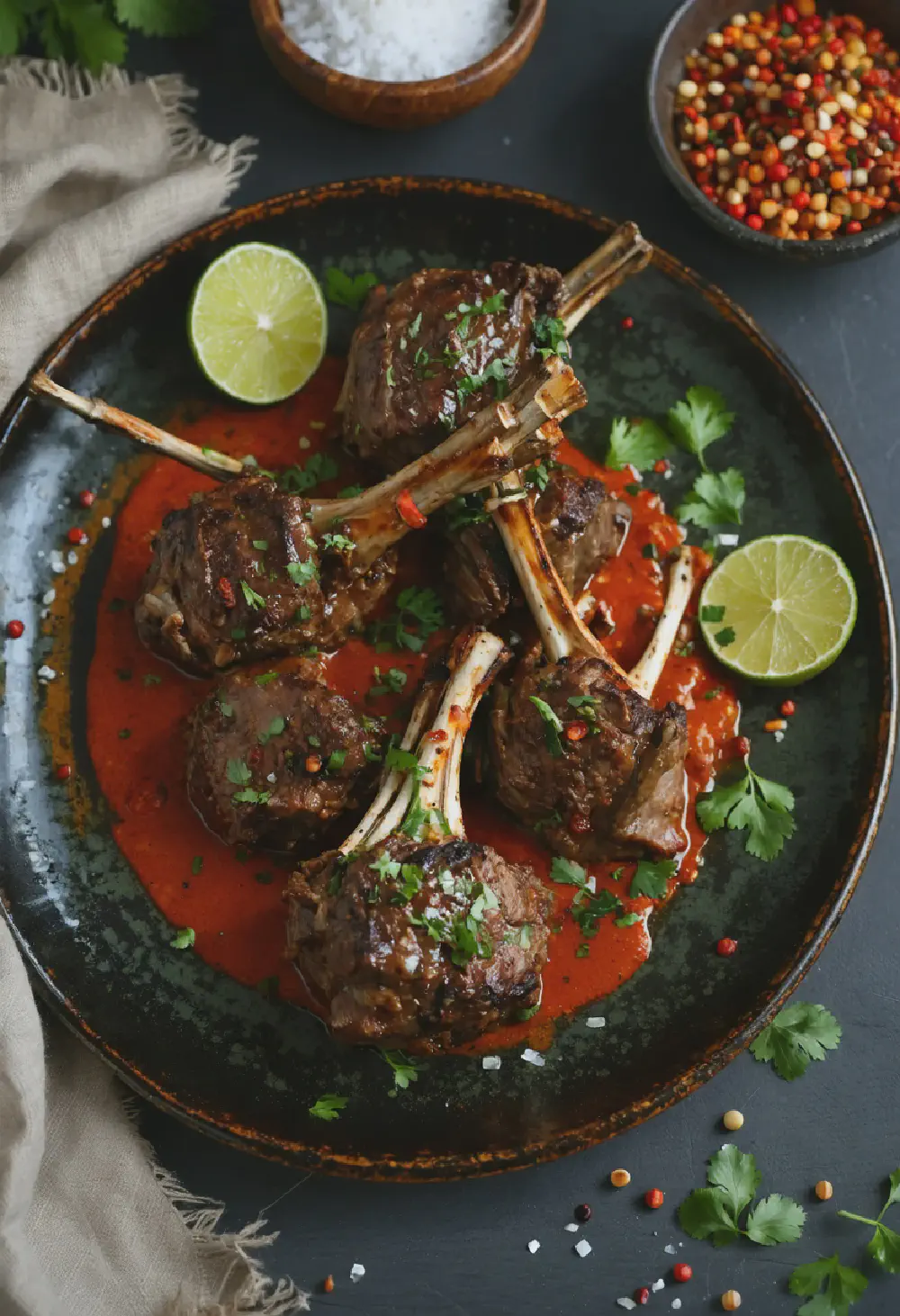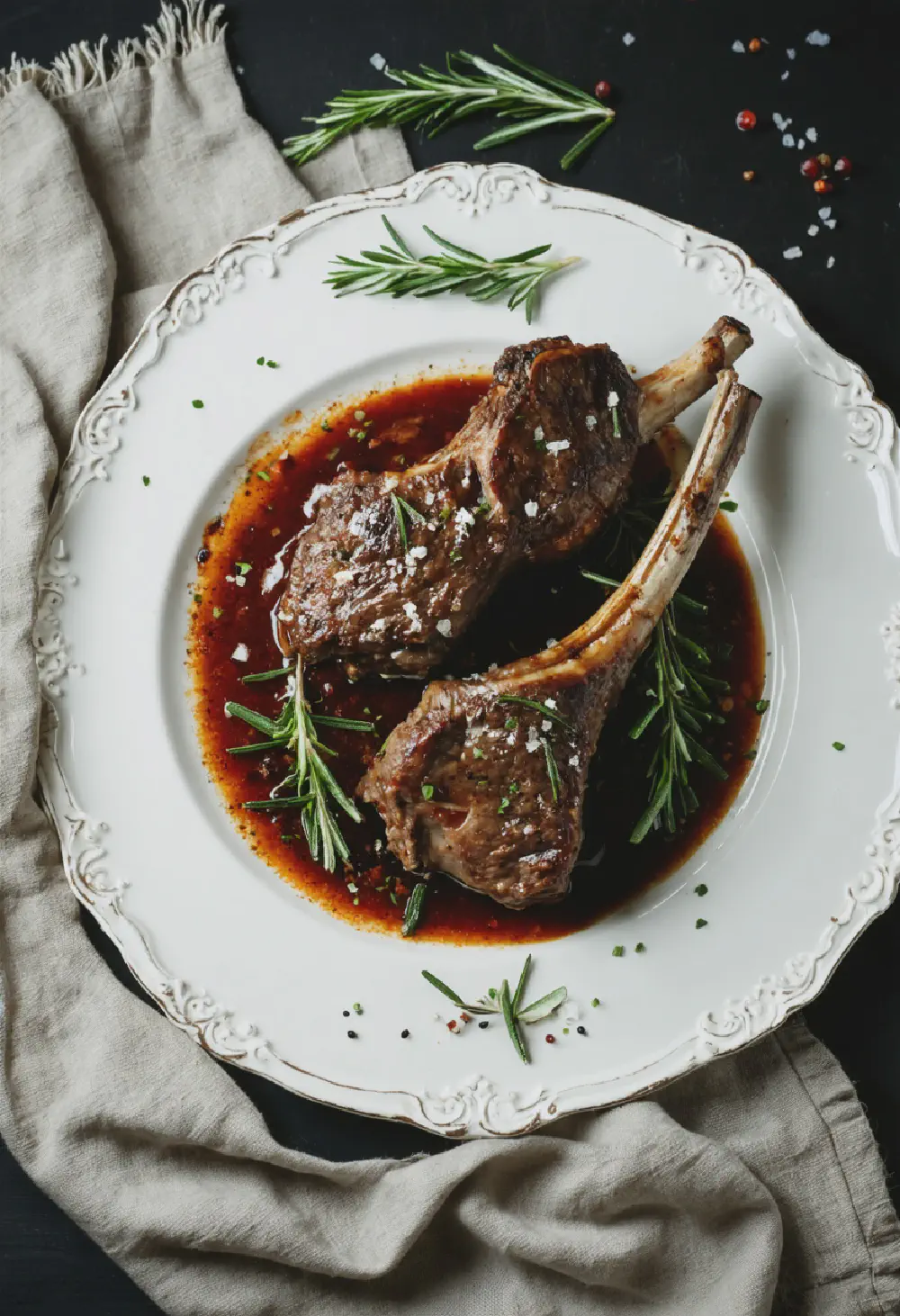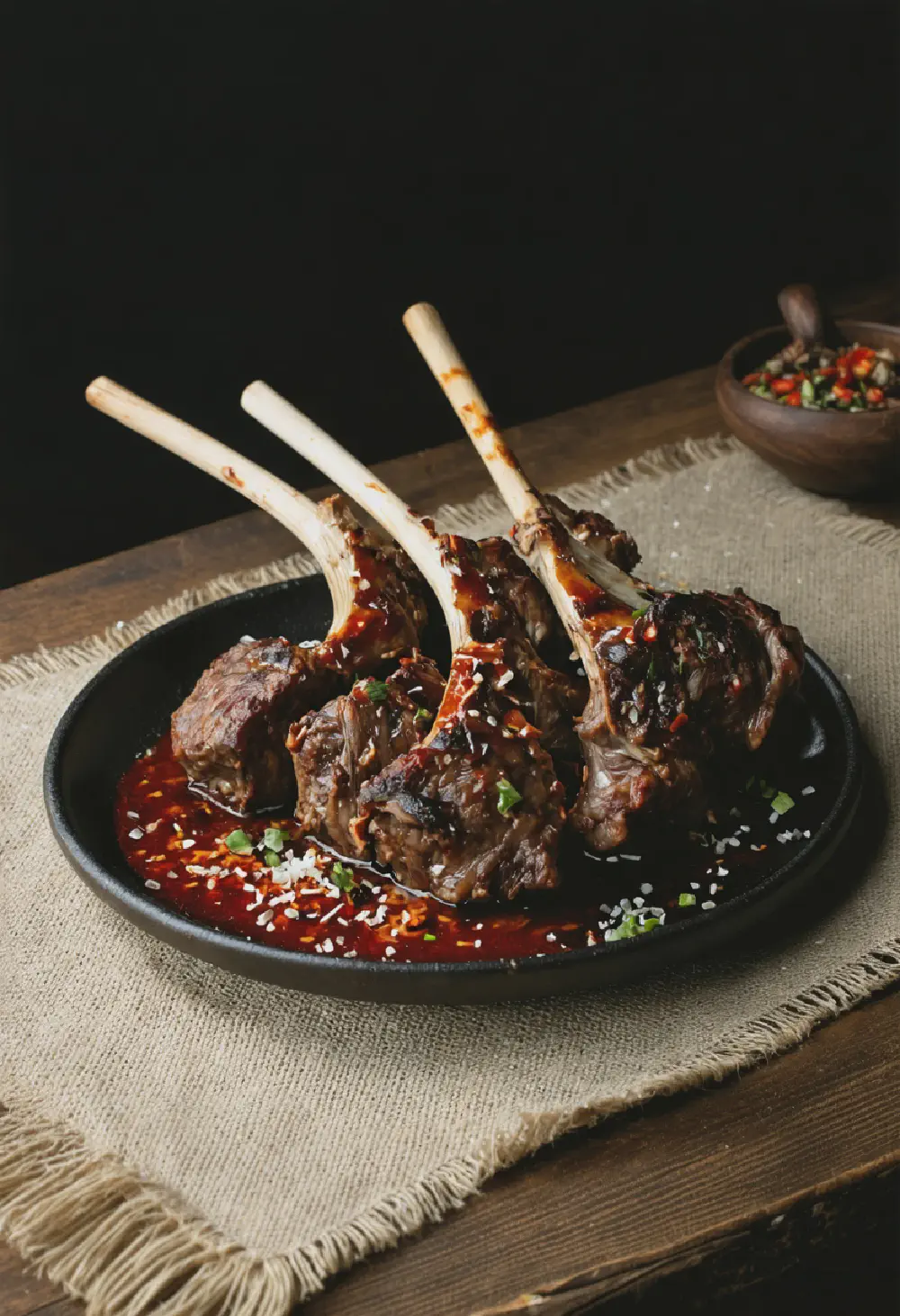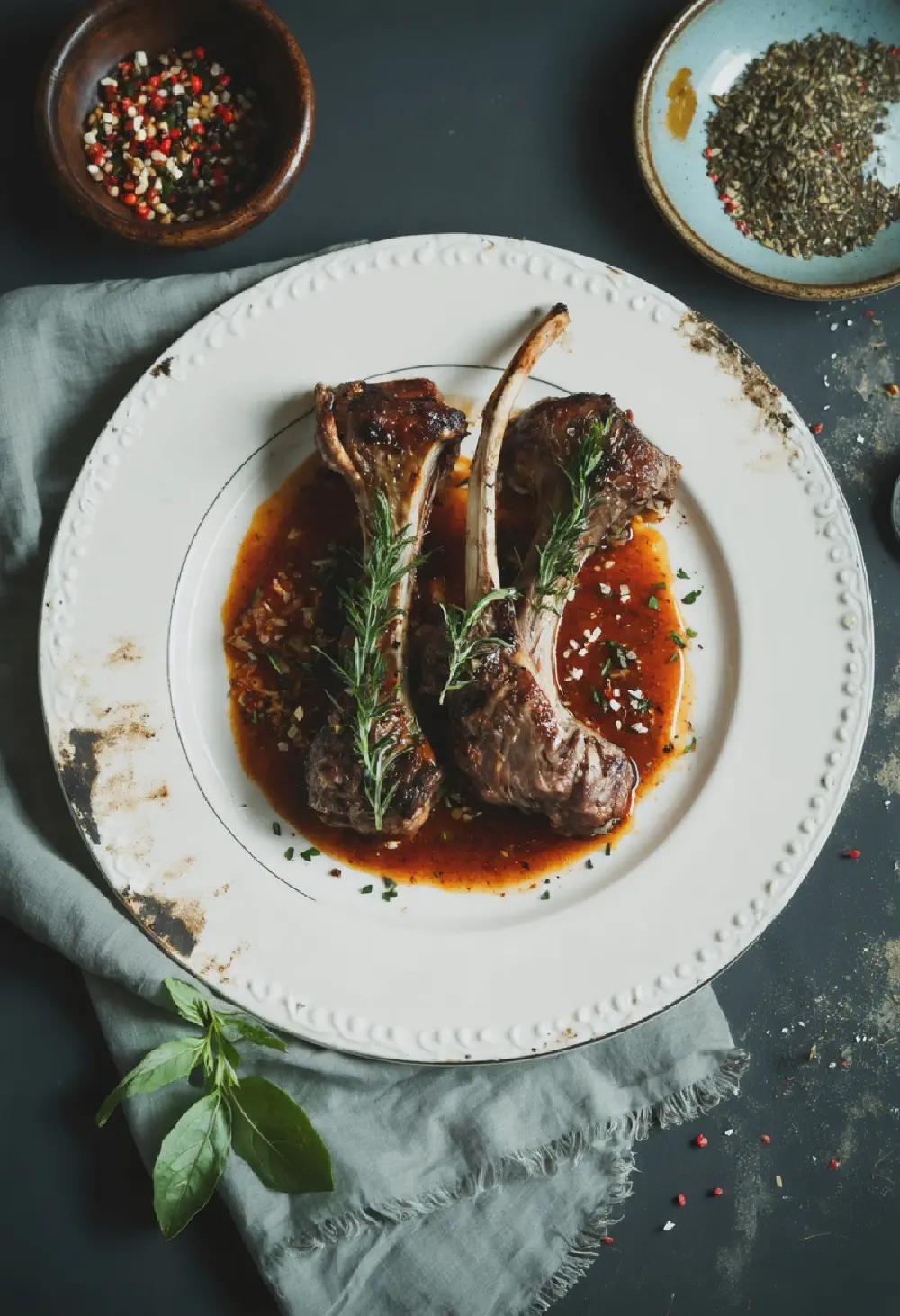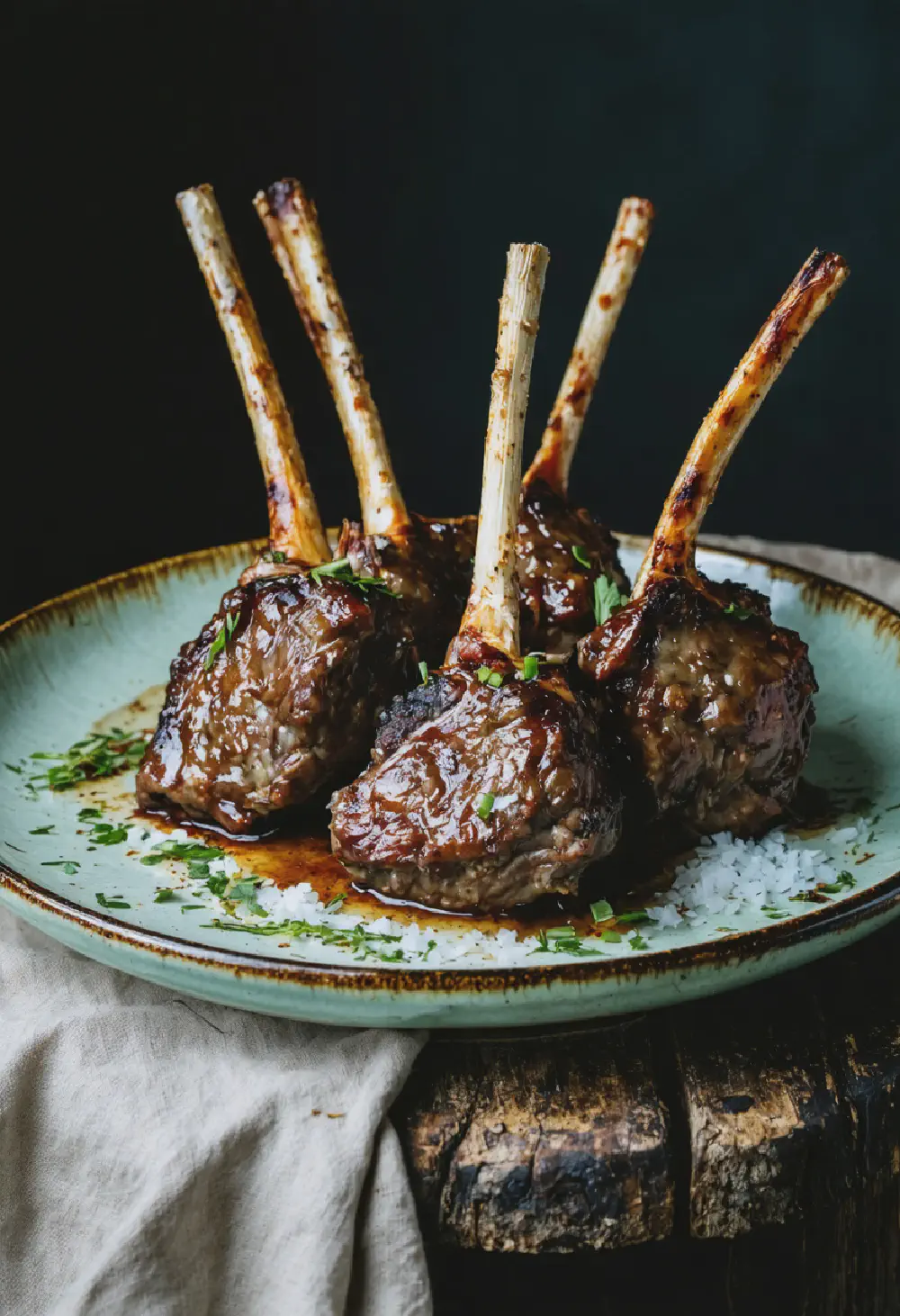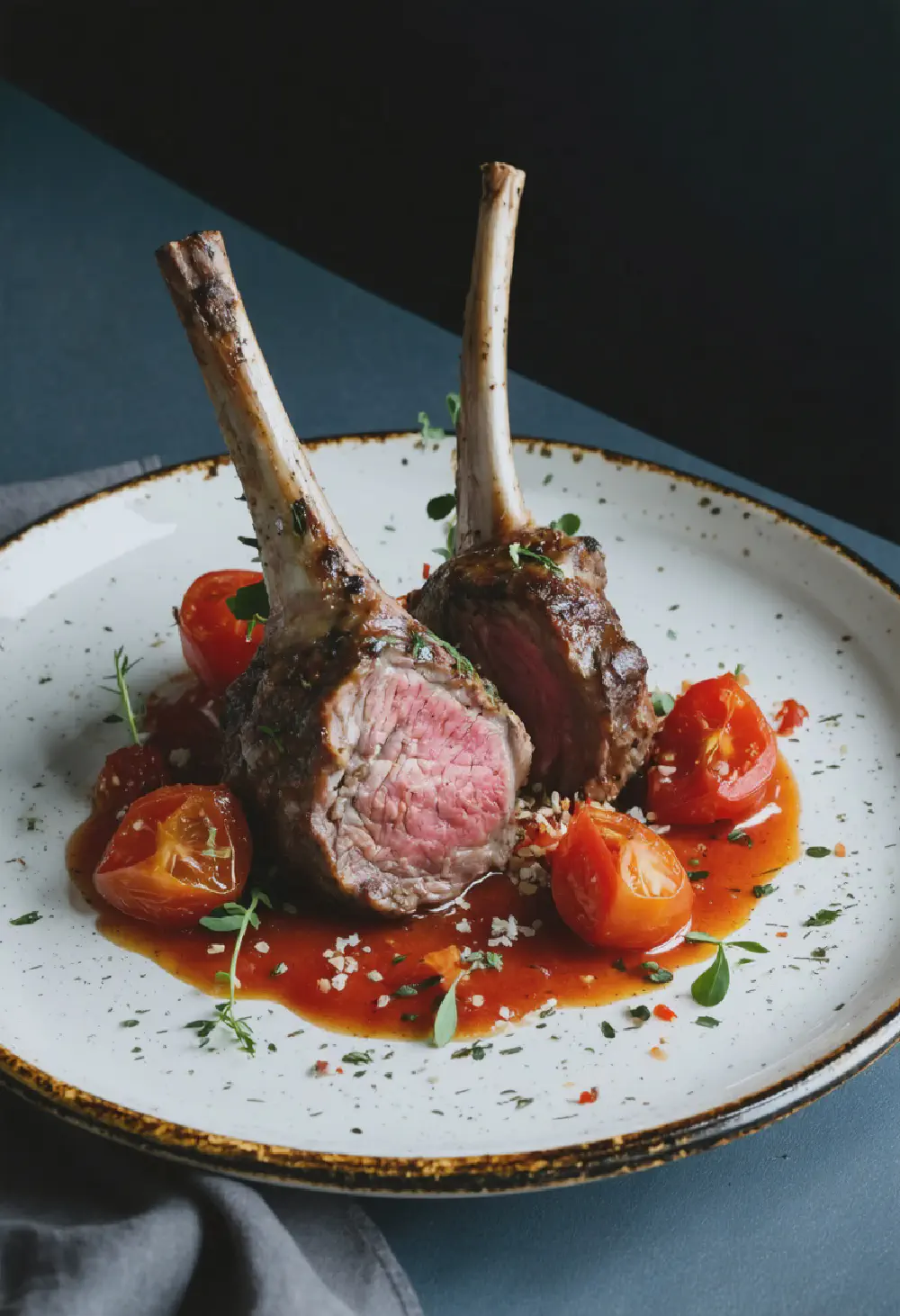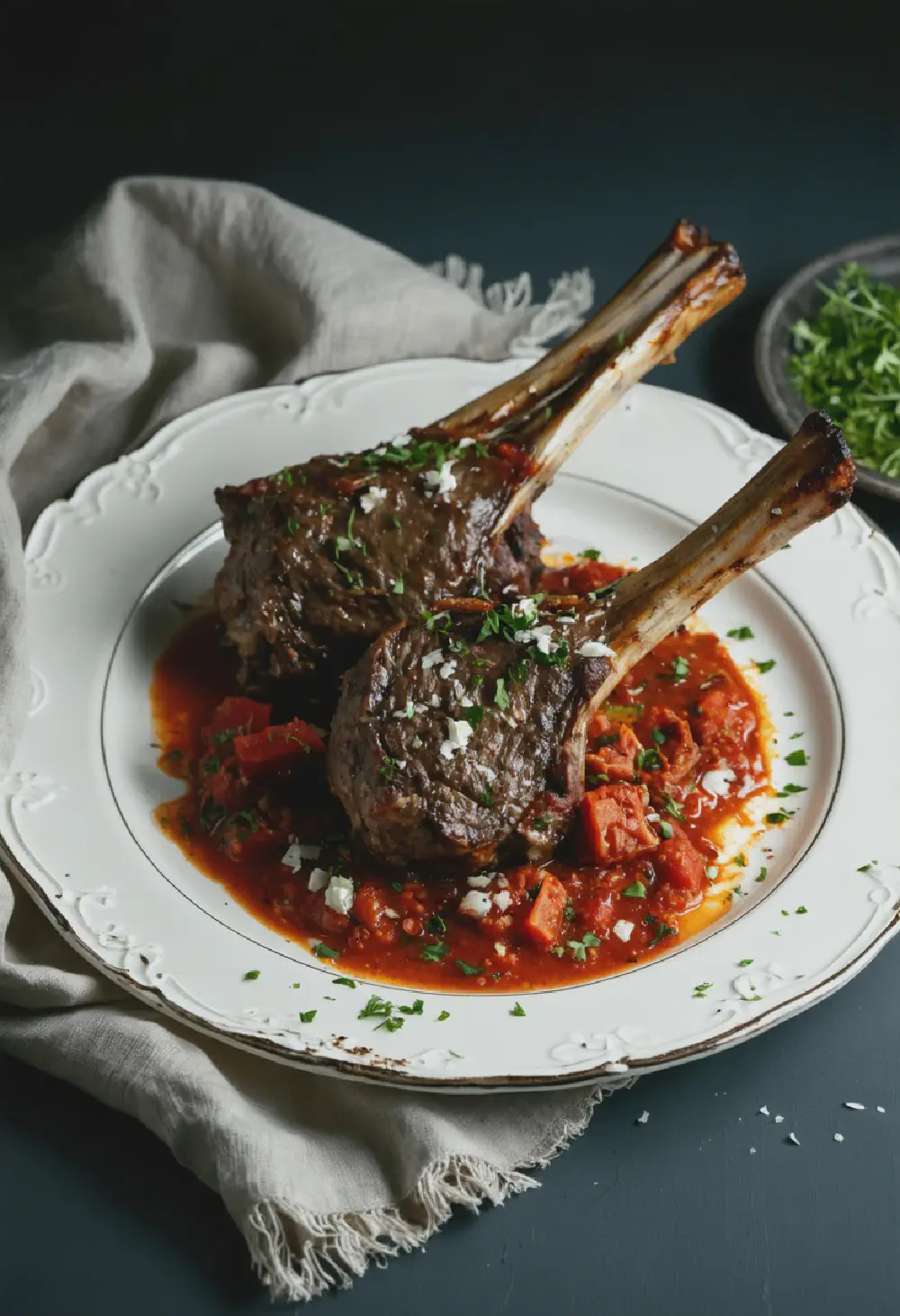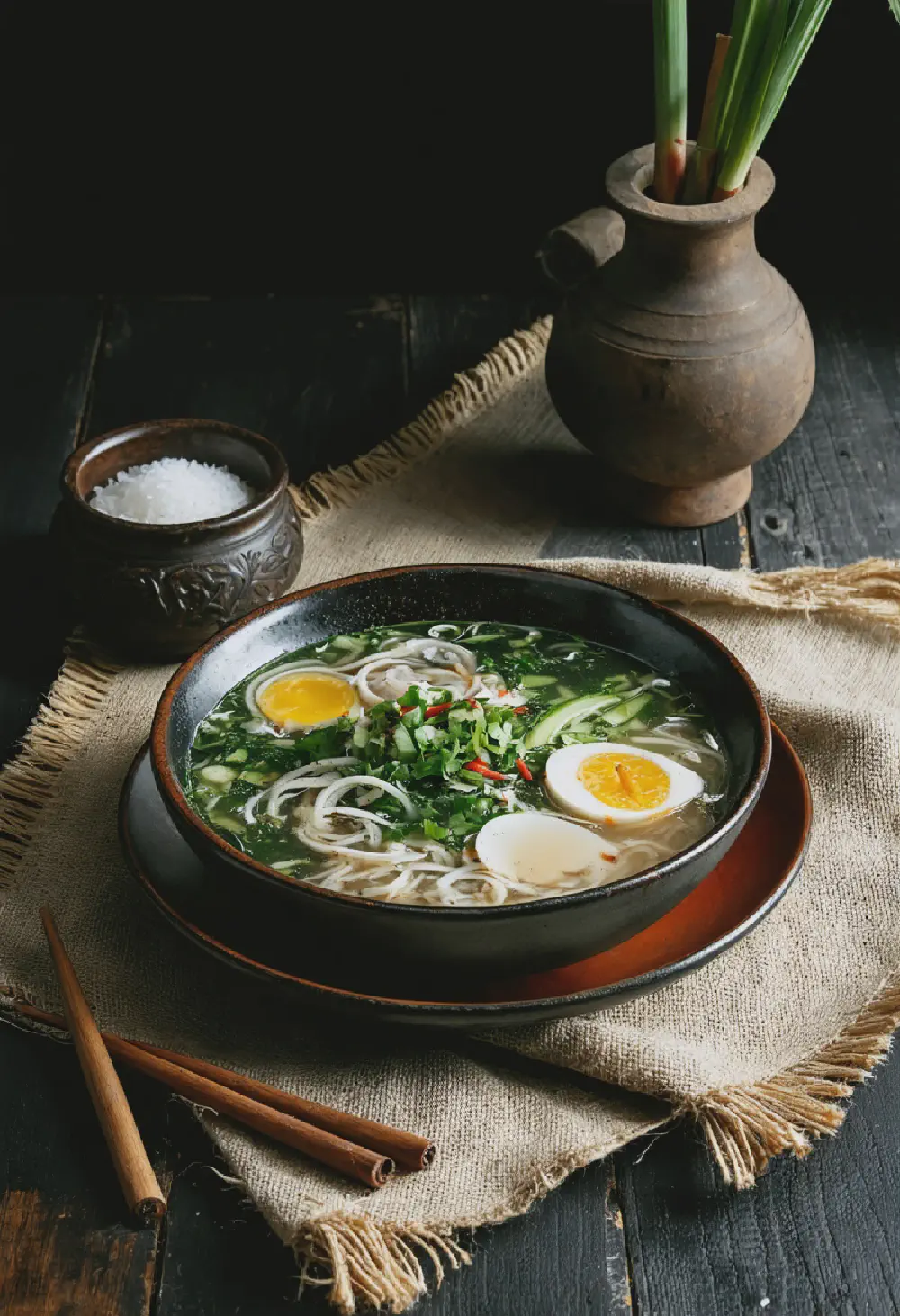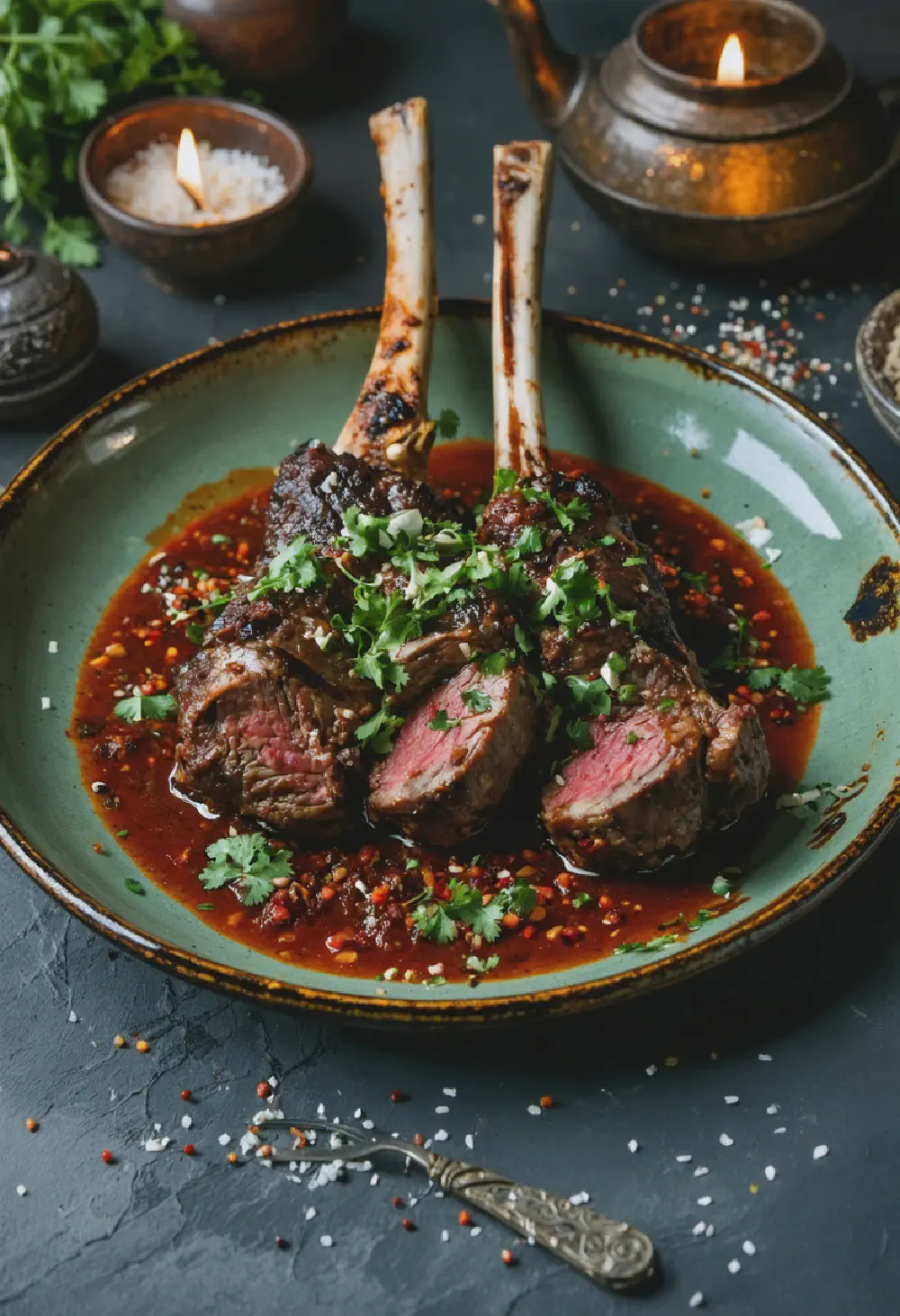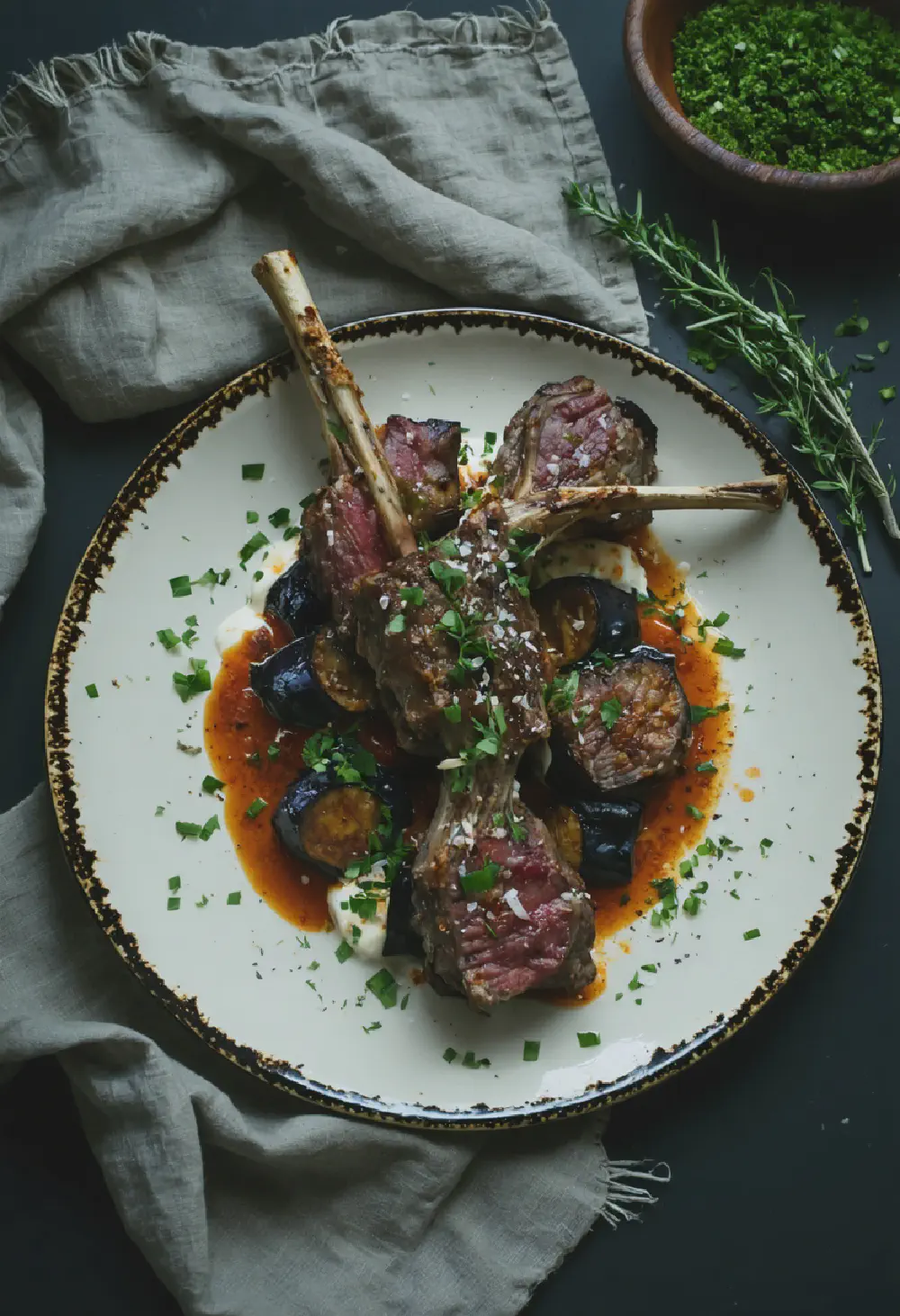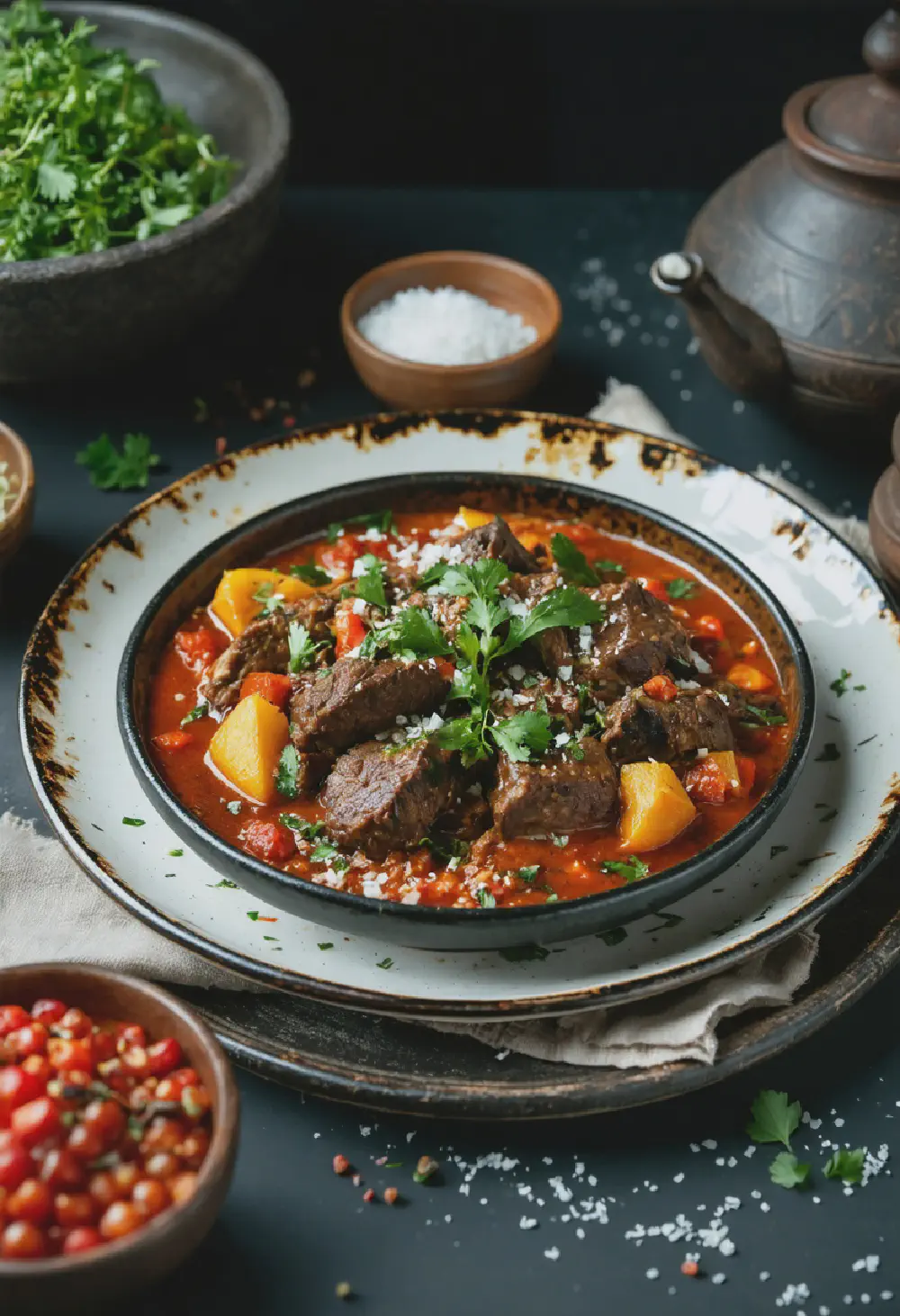Ethiopian Lamb Shanks with Berbere Spice
20M
3H and 20M
- Makes 4
- 4 lamb shanks
- 2 tablespoons Berbere spice blend
- 2 onions, finely chopped
- 4 cloves garlic, minced
- 1 inch piece of ginger, grated
- 2 tablespoons tomato paste
- 2 cups beef or lamb broth
- 2 tablespoons vegetable oil
- Salt to taste
- Freshly ground black pepper to taste
- 1 teaspoon ground cardamom
- 1 teaspoon ground coriander
- 1 teaspoon ground cumin
- 1 teaspoon ground fenugreek
- 1 teaspoon ground turmeric
- 1 teaspoon ground cinnamon
- 1 teaspoon ground cloves
- 1 teaspoon ground allspice
- Preheat your oven to 325°F (160°C).
- Season the lamb shanks generously with salt and pepper.
- Heat the vegetable oil in a large, oven-safe pot over medium-high heat. Brown the lamb shanks on all sides, about 3-4 minutes per side. Remove the shanks and set aside.
- In the same pot, add the chopped onions and cook until they are soft and translucent, about 5 minutes.
- Add the minced garlic and grated ginger, cooking for another 2 minutes until fragrant.
- Stir in the Berbere spice blend, tomato paste, cardamom, coriander, cumin, fenugreek, turmeric, cinnamon, cloves, and allspice. Cook for 2 minutes to toast the spices.
- Pour in the beef or lamb broth, stirring to combine all the ingredients. Bring the mixture to a simmer.
- Return the lamb shanks to the pot, ensuring they are submerged in the liquid. Cover the pot with a lid.
- Transfer the pot to the preheated oven and cook for about 3 hours, or until the lamb is tender and falling off the bone.
- Remove the pot from the oven and let it rest for 10 minutes before serving. Adjust seasoning with salt and pepper if needed.
- Serve the lamb shanks hot, with the sauce spooned over the top. Traditionally, this dish is served with injera, a type of Ethiopian flatbread.
Ethiopian Lamb Shanks with Berbere Spice: A Flavorful Journey
History
Ethiopian Lamb Shanks with Berbere Spice is a dish deeply rooted in the rich culinary history of Ethiopia. This traditional recipe has been passed down through generations, reflecting the country’s long-standing tradition of using spices to enhance the flavors of their dishes. The use of Berbere spice, a cornerstone of Ethiopian cuisine, dates back centuries and is believed to have originated in the northern regions of Ethiopia. This spice blend, which includes ingredients like chili peppers, garlic, ginger, and fenugreek, was historically used not only to add flavor but also to preserve meat in a region where refrigeration was not always available. The slow-cooking method used for the lamb shanks is a testament to the Ethiopian approach to cooking, where time and patience are key to achieving tender, flavorful results.
Taste Profile
The taste profile of Ethiopian Lamb Shanks with Berbere Spice is a harmonious blend of heat, depth, and richness. The Berbere spice mix is the star of the dish, providing a fiery kick that is balanced by the slow-cooked, tender lamb shanks. The heat from the chili peppers in the Berbere is complemented by the warmth of ginger and the earthiness of fenugreek, creating a complex flavor profile that is both spicy and aromatic. The slow-cooking process allows the flavors to meld together, resulting in a dish that is hearty and satisfying. The lamb shanks become incredibly tender, almost melting in your mouth, while the sauce that develops from the spices and meat juices adds a rich, savory element to the dish.
Cultural Significance
In Ethiopian cuisine, Ethiopian Lamb Shanks with Berbere Spice holds a significant place, often served during special occasions and family gatherings. The dish is a celebration of the country’s rich spice heritage and the communal nature of Ethiopian dining. Traditionally, it is served on a large platter of injera, a sourdough flatbread that is a staple in Ethiopian meals, encouraging diners to share and enjoy the meal together. The use of Berbere spice is not just a culinary choice but a cultural one, symbolizing the importance of spice in Ethiopian life and cuisine. This dish embodies the essence of Ethiopian hospitality, where food is not just sustenance but a means of bringing people together, fostering a sense of community and shared experience.
